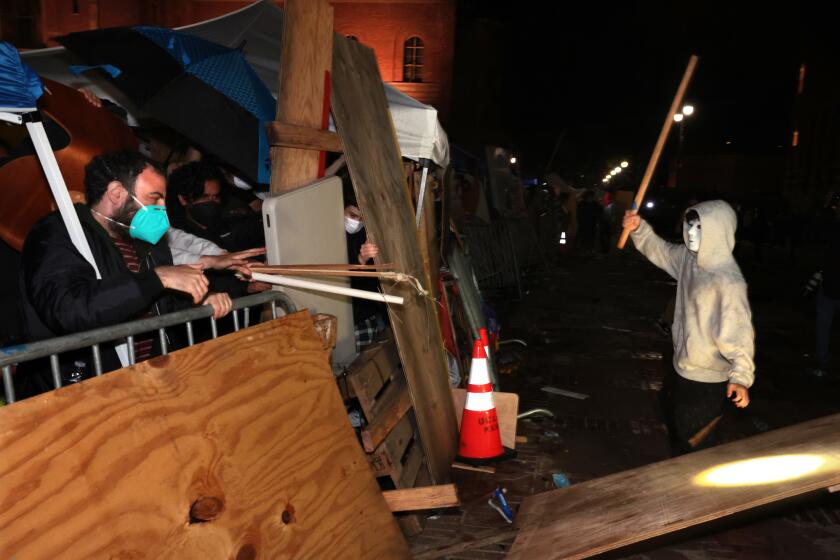Patience Amid the Grieving
It will be several weeks before we know what killed Eric Hoggatt, the 18-year-old Reseda High School senior and running back who died in his sleep after a rough football game earlier this month. The initial autopsy proved inconclusive; pathologists say they need the additional time to determine how a seemingly healthy young man died for no apparent reason. Just as important as determining how Hoggatt died, though, is determining how he didn’t die.
We agree completely with the wait-and-see attitude espoused in the letter from Reseda High faculty, staff and students on the page opposite. It urges patience as painful questions about Hoggatt’s death are answered in the weeks ahead. But we wish the school’s administration would practice what it so wisely preaches.
In a memo circulated to Reseda High staff last week, Principal Robert Kladifko took pains to point out that when Hoggatt left school on the bus after the game, late at night, “he was not complaining of any physical problems.” The memo also reported that Hoggatt “gave no indication of any physical problems except exhaustion from playing a terrific game.” Although intended to inform school workers of the death and stem the inevitable swirl of rumors, the memo’s it’s-not-our-fault tone seemed to show little regard to the pain of Hoggatt’s family and friends. Admittedly, no principal looks forward to dealing with the death of a student, but the memo should have avoided the defensive tone that many read into it.
At the same time, the school’s staff has performed admirably in helping students and teachers grieve. Crisis counselors were dispatched to comfort the shaken, and students who felt they needed private time were dismissed for the day.
The death of any young person is deeply painful for those left behind, but Eric Hoggatt’s death touched a nerve in children and parents across the city because it occurred just hours after he left the playing field early--reportedly complaining to a friend of dizziness and numbness in his legs and fingers. Soon after his death, questions arose about whether the 5-foot-8, 160-pound athlete might have suffered a fatal blow during the game. Hoggatt’s complaint of numbness and dizziness, after all, was consistent with the signs of a head or spinal-cord injury--both of which can be extremely difficult to diagnose and monitor on the sidelines of a game. Nevertheless, Hoggatt reassured coaches and the team doctor that he felt fine and was allowed to head home on the bus. Hoggatt’s family later complained that they were not even notified of the young man’s initial complaints, which might have spurred them to seek treatment on their own.
It is possible that Hoggatt suffered a fatal injury during the game. About 400,000 football players were hurt during games or practices last year. Nine high school players died from head injuries or heatstroke. But, as today’s letter points out, it is simply too early to know. Indeed, deaths that occur during sporting events often have no direct relation to the event itself. They are caused instead by previously hidden illnesses or defects. Consider the death of Loyola Marymount University basketball player Hank Gathers, who collapsed during a game and died. It was later revealed that he had a heart disorder.
The temptation persists to speculate about why a young man like Eric Hoggatt died, but it must be resisted. Impatience leads only to half-truths and half-truths to resentment and suspicion, which only make a painful situation worse. Difficult as it may be, the wisest course is to cope with the grief at hand and wait for the answers. Only time will tell. And only time will heal the pain.



